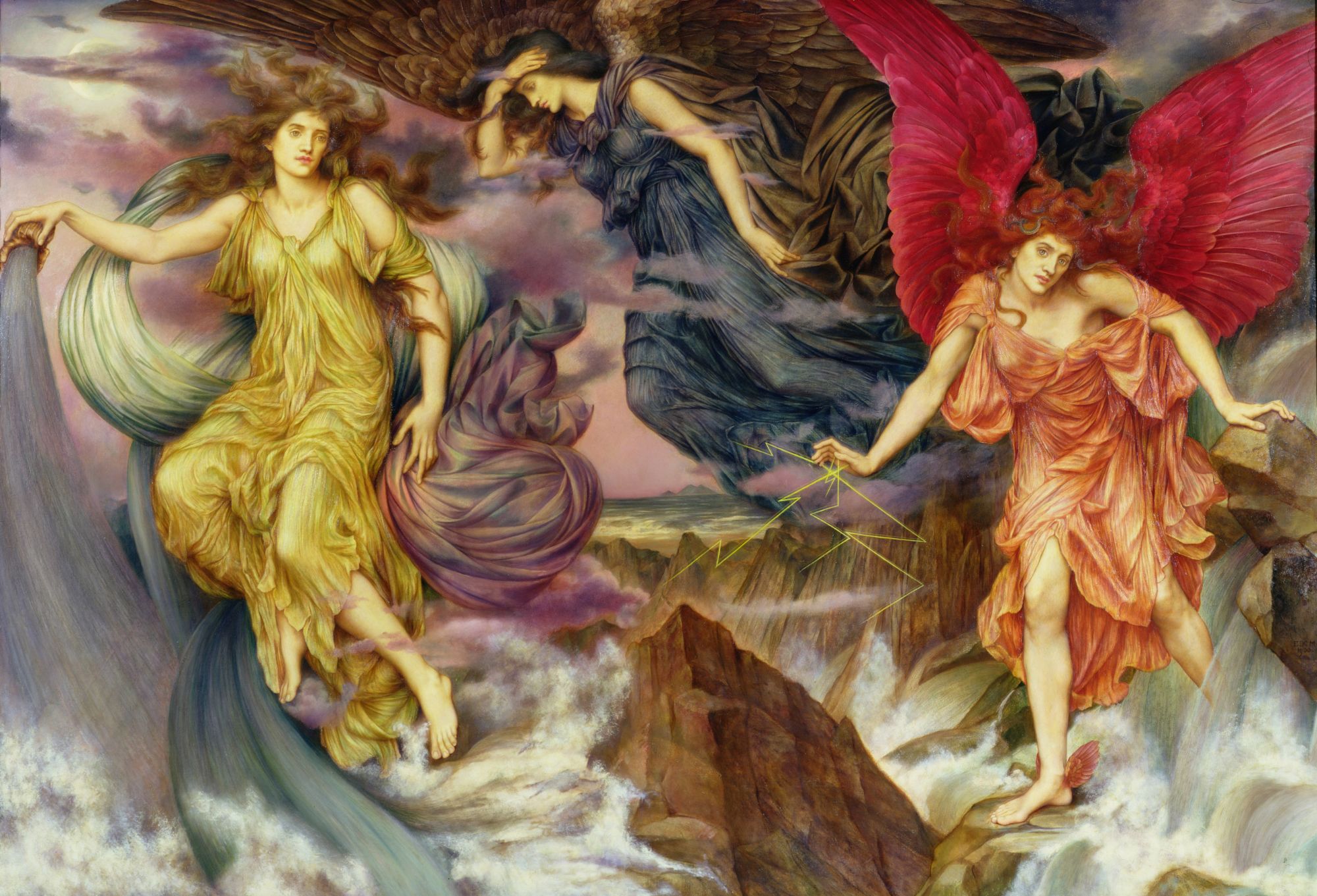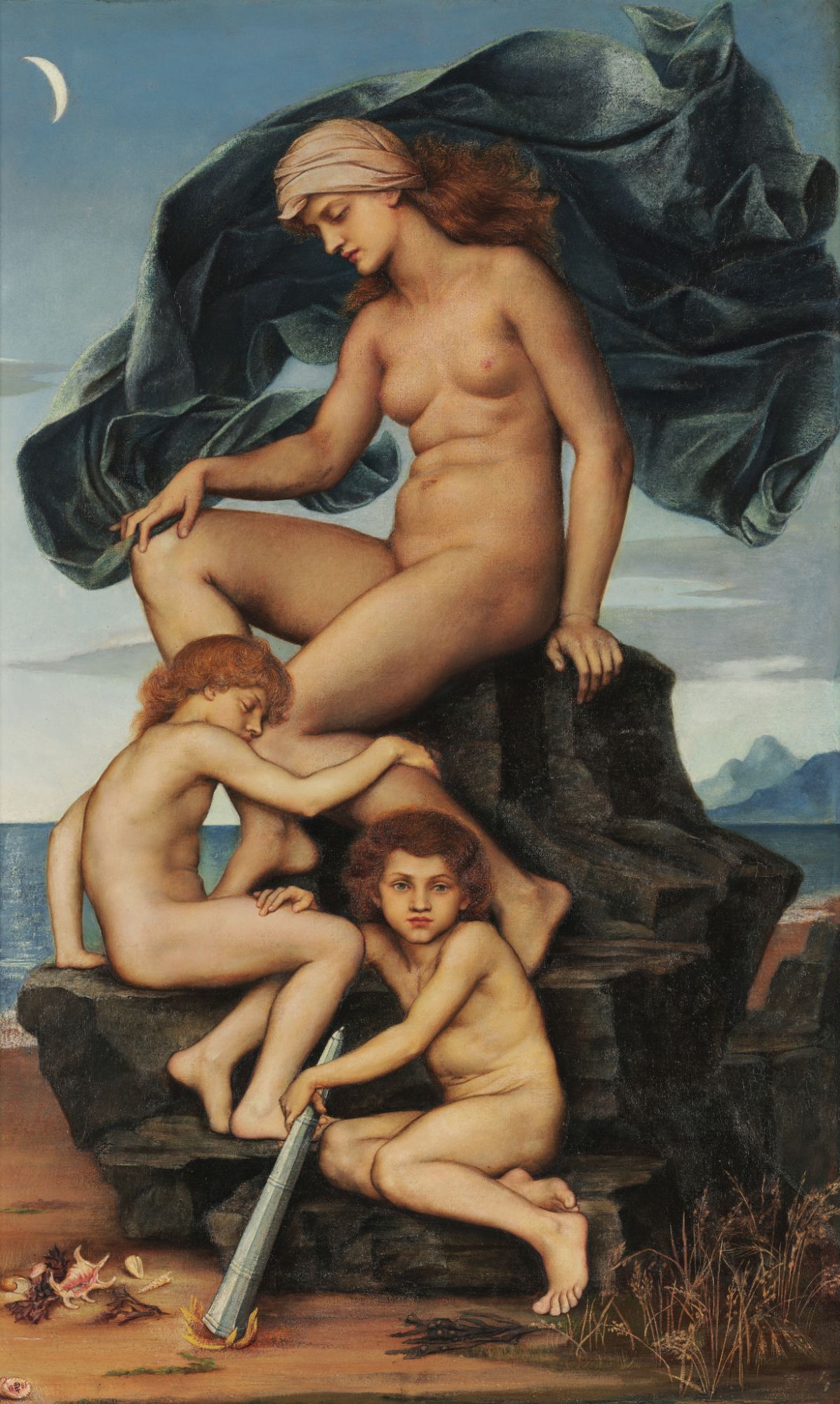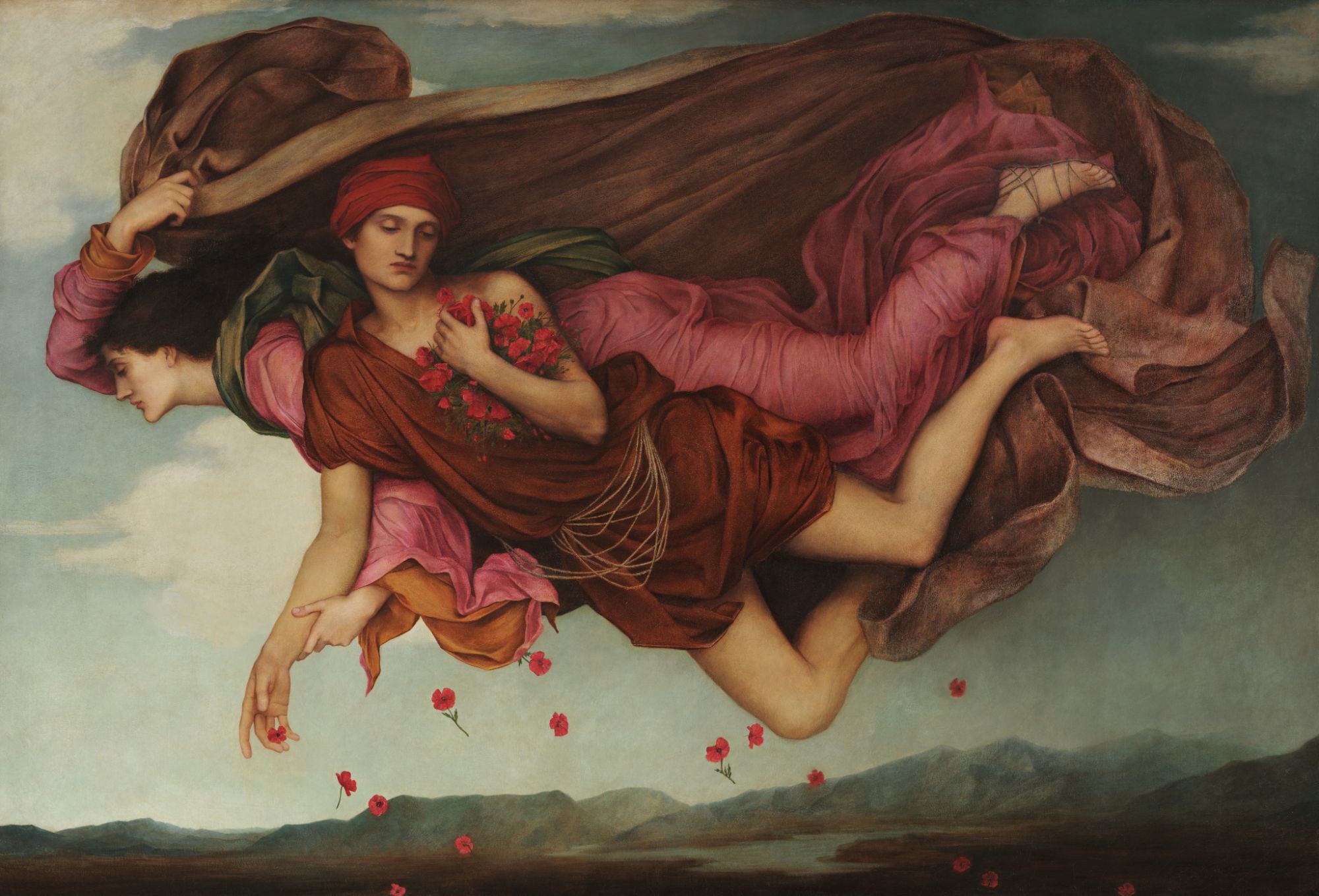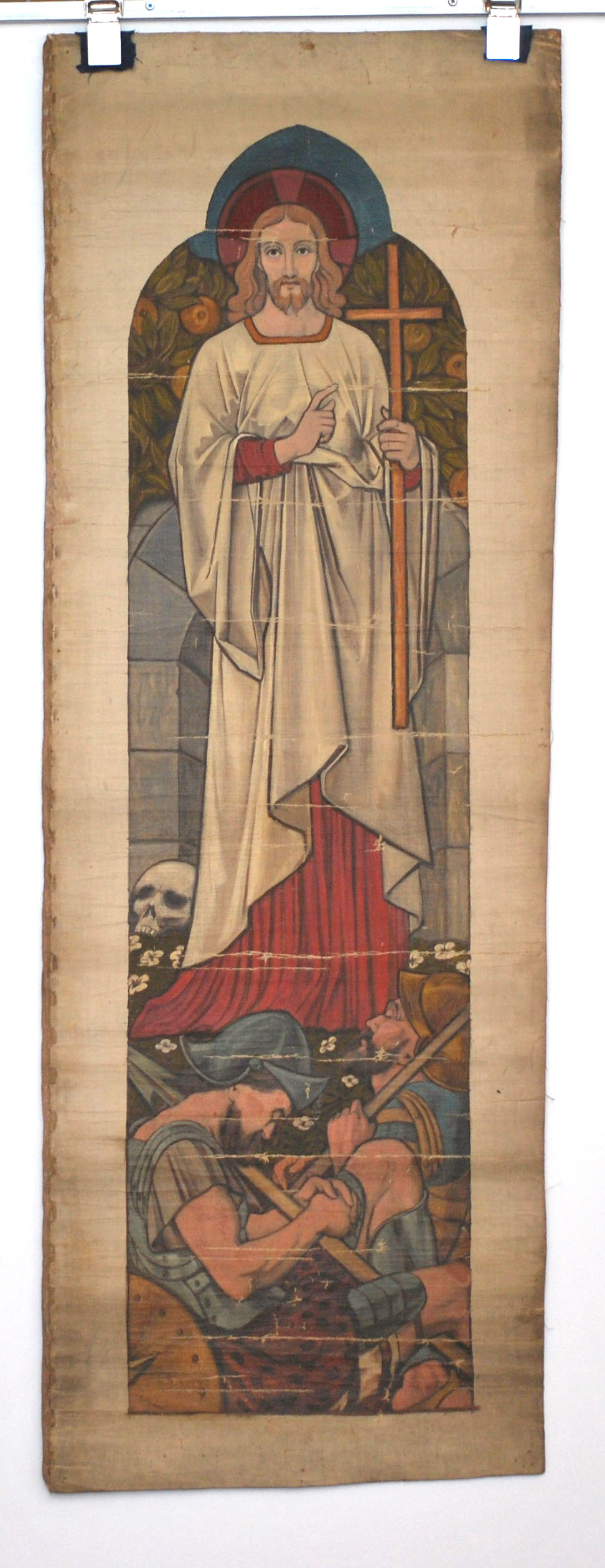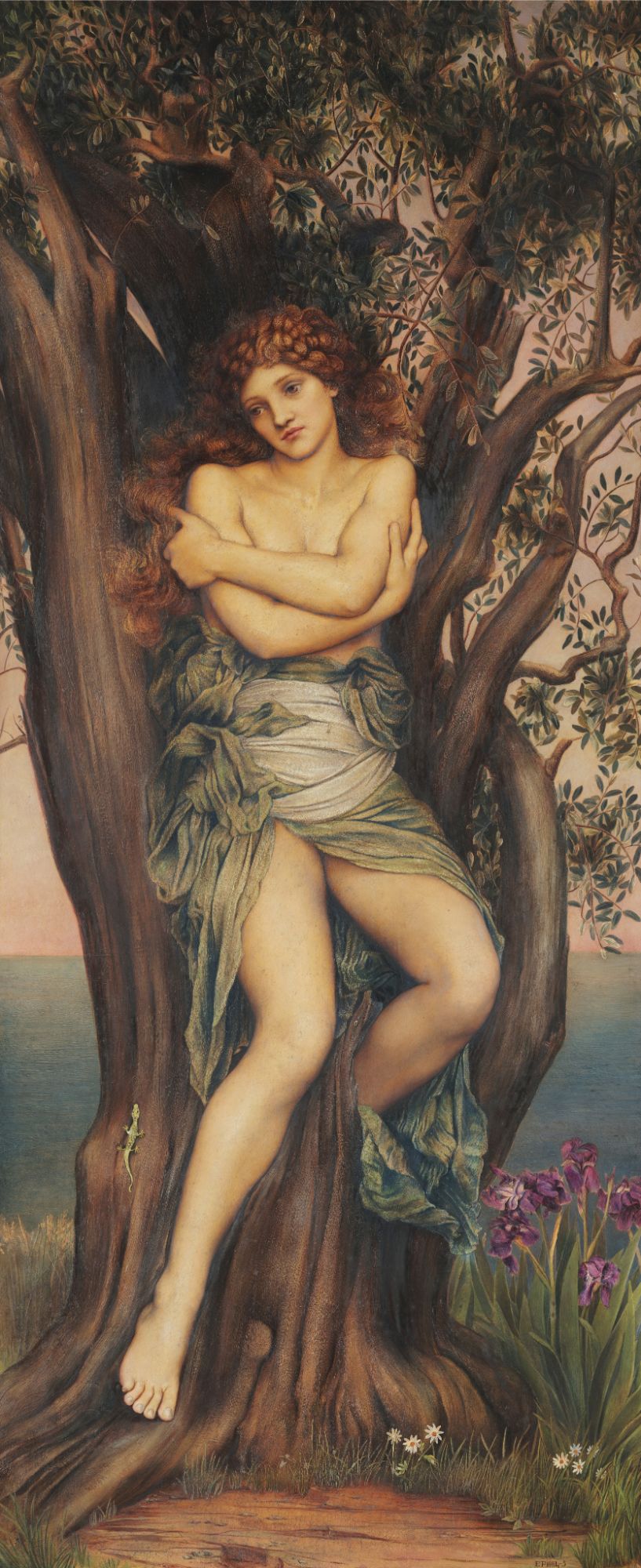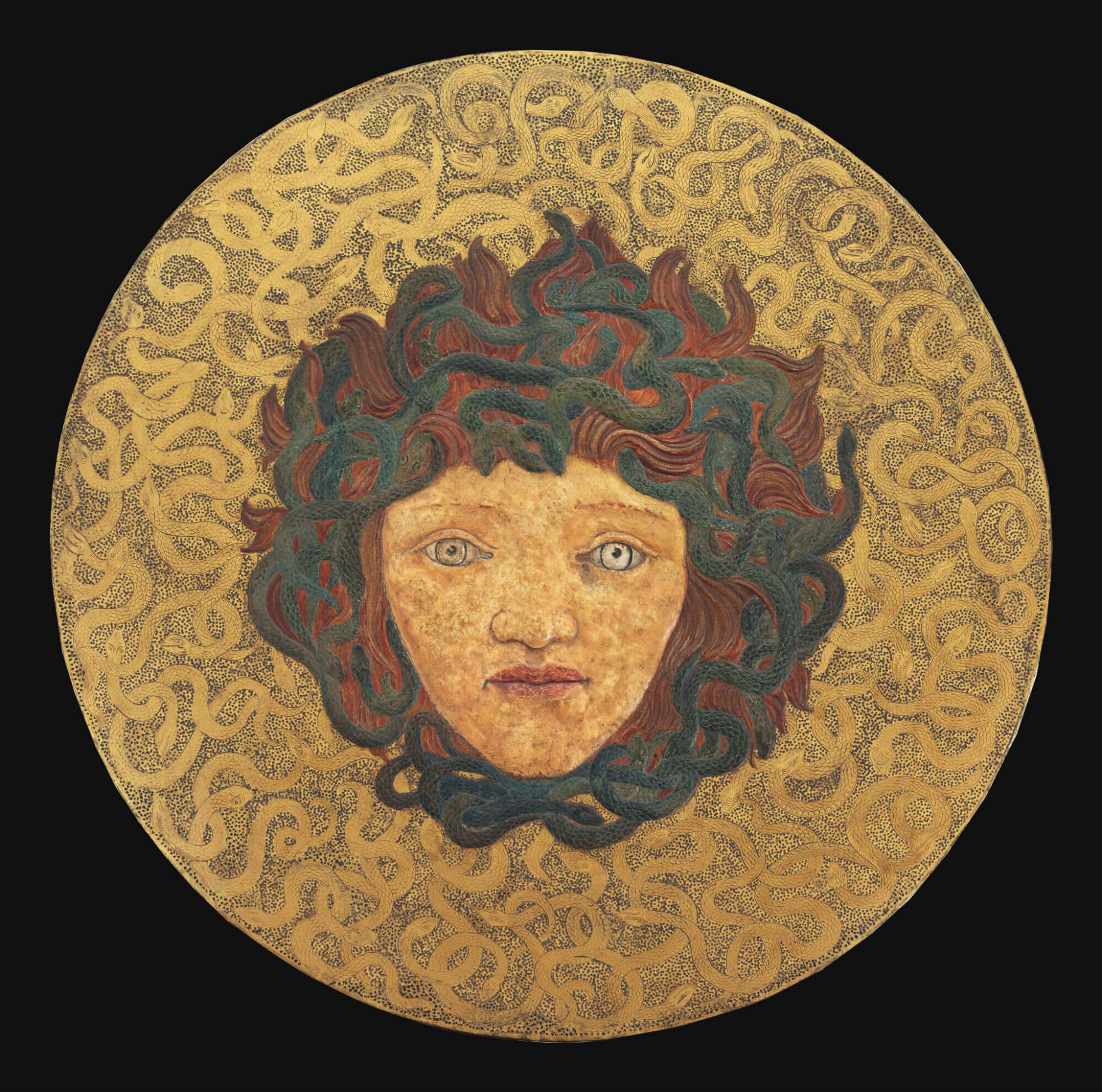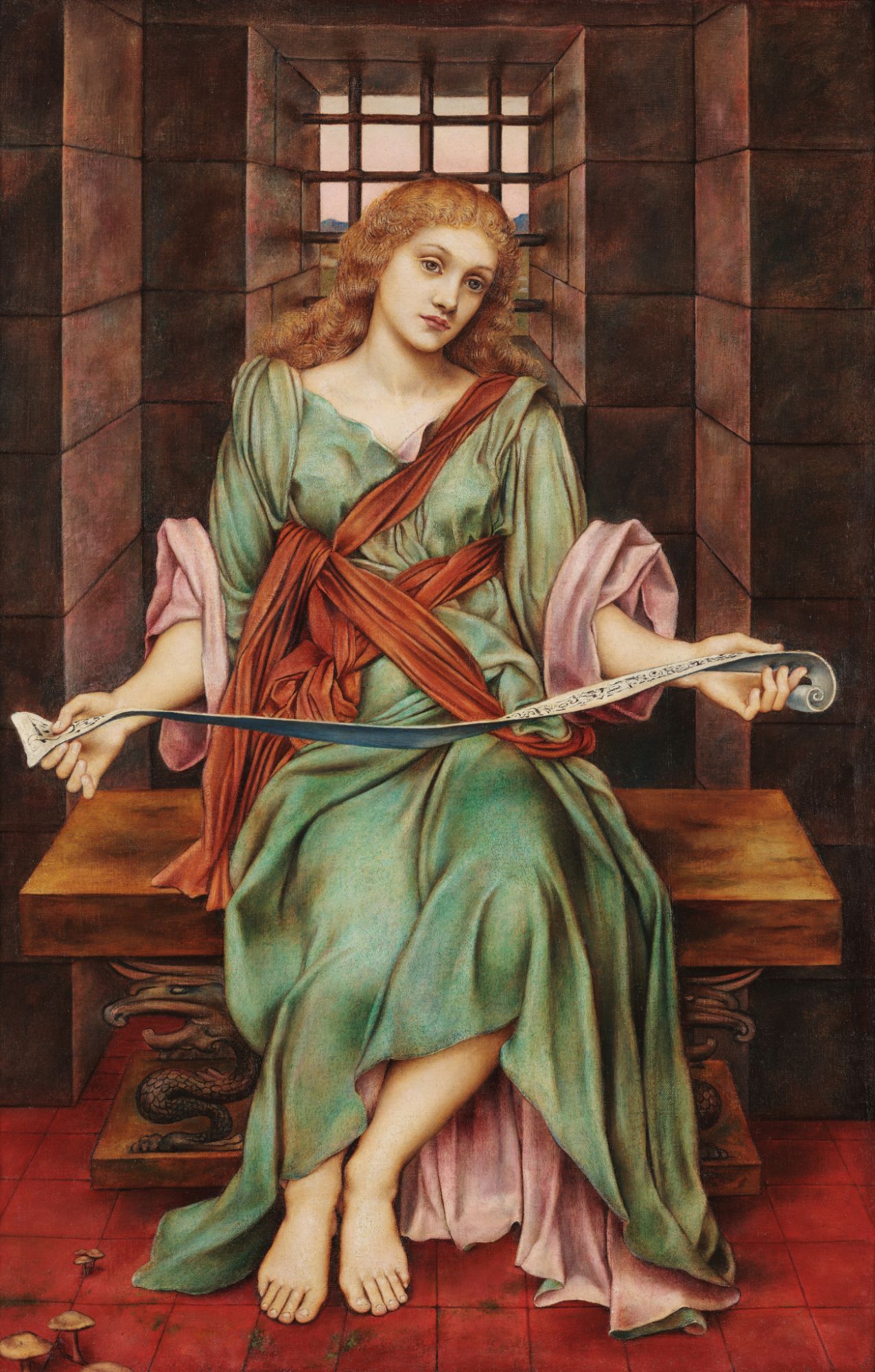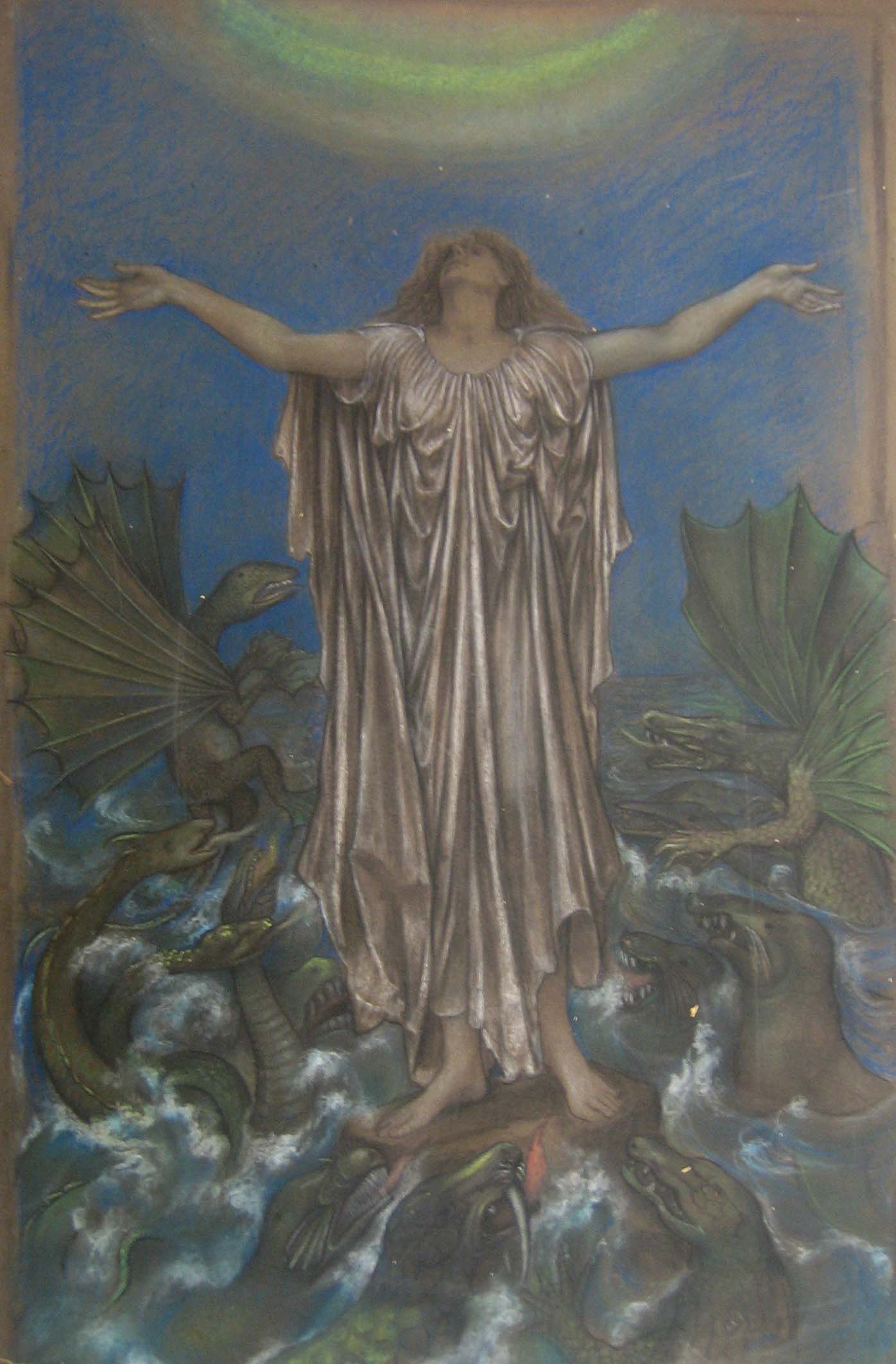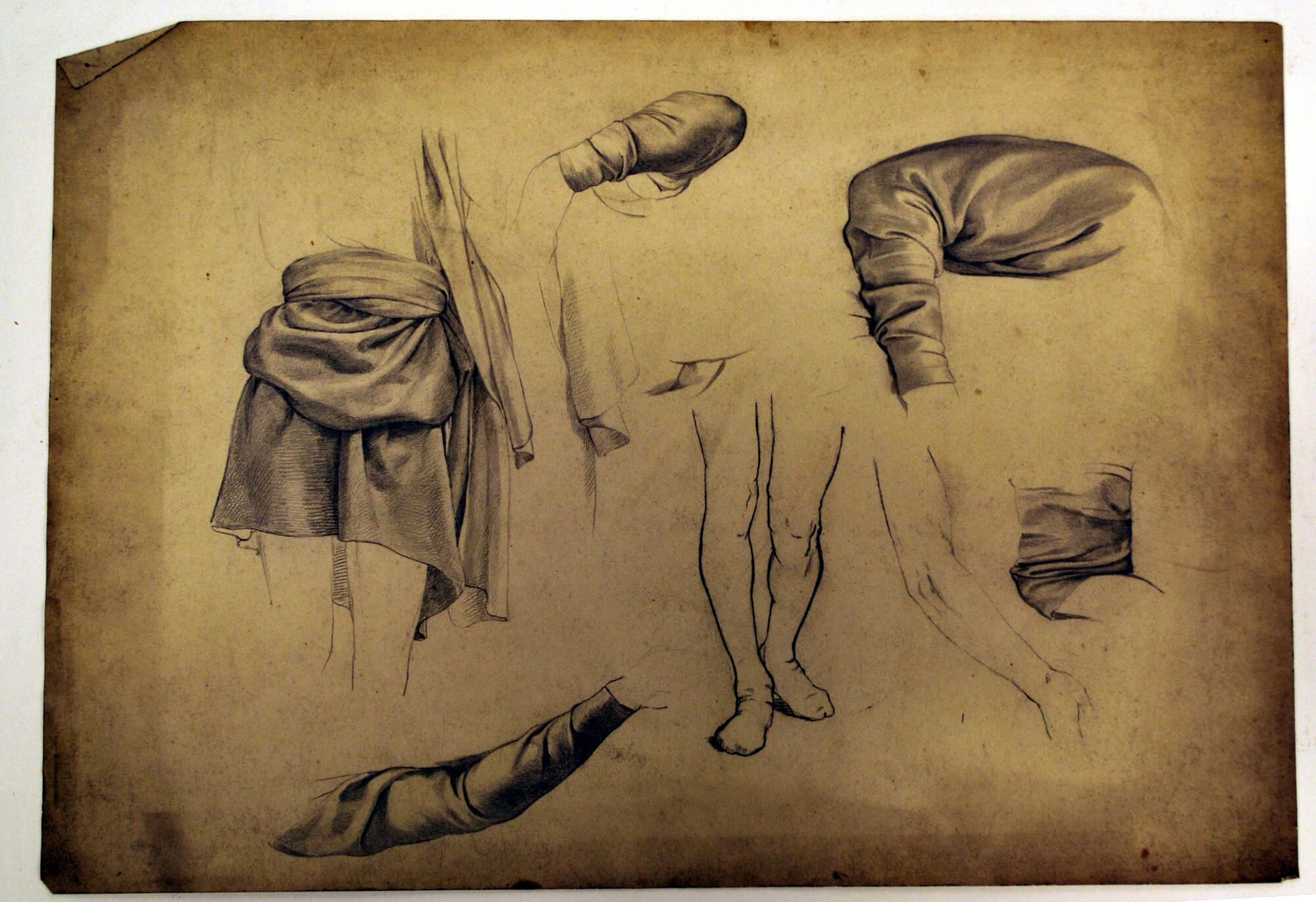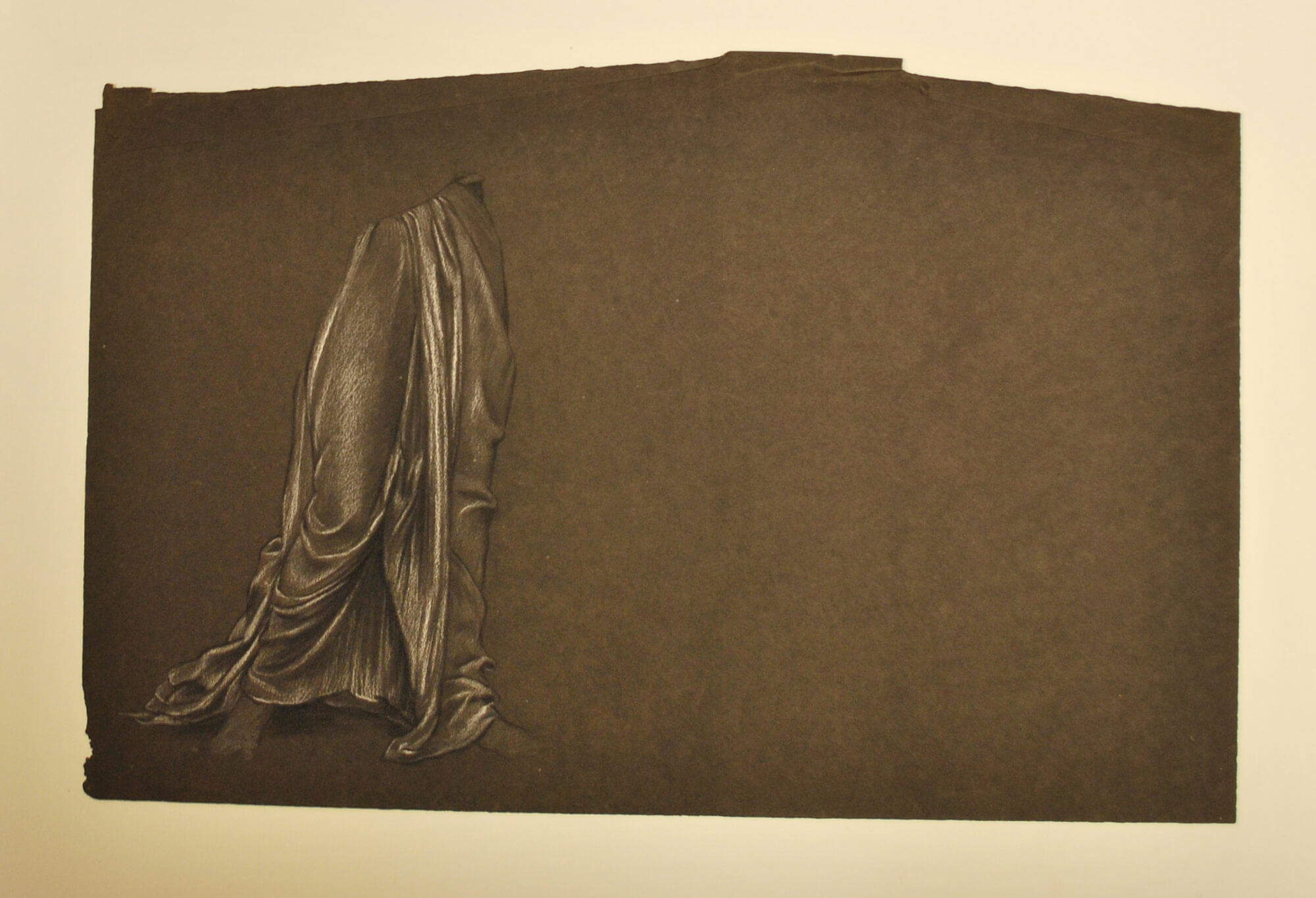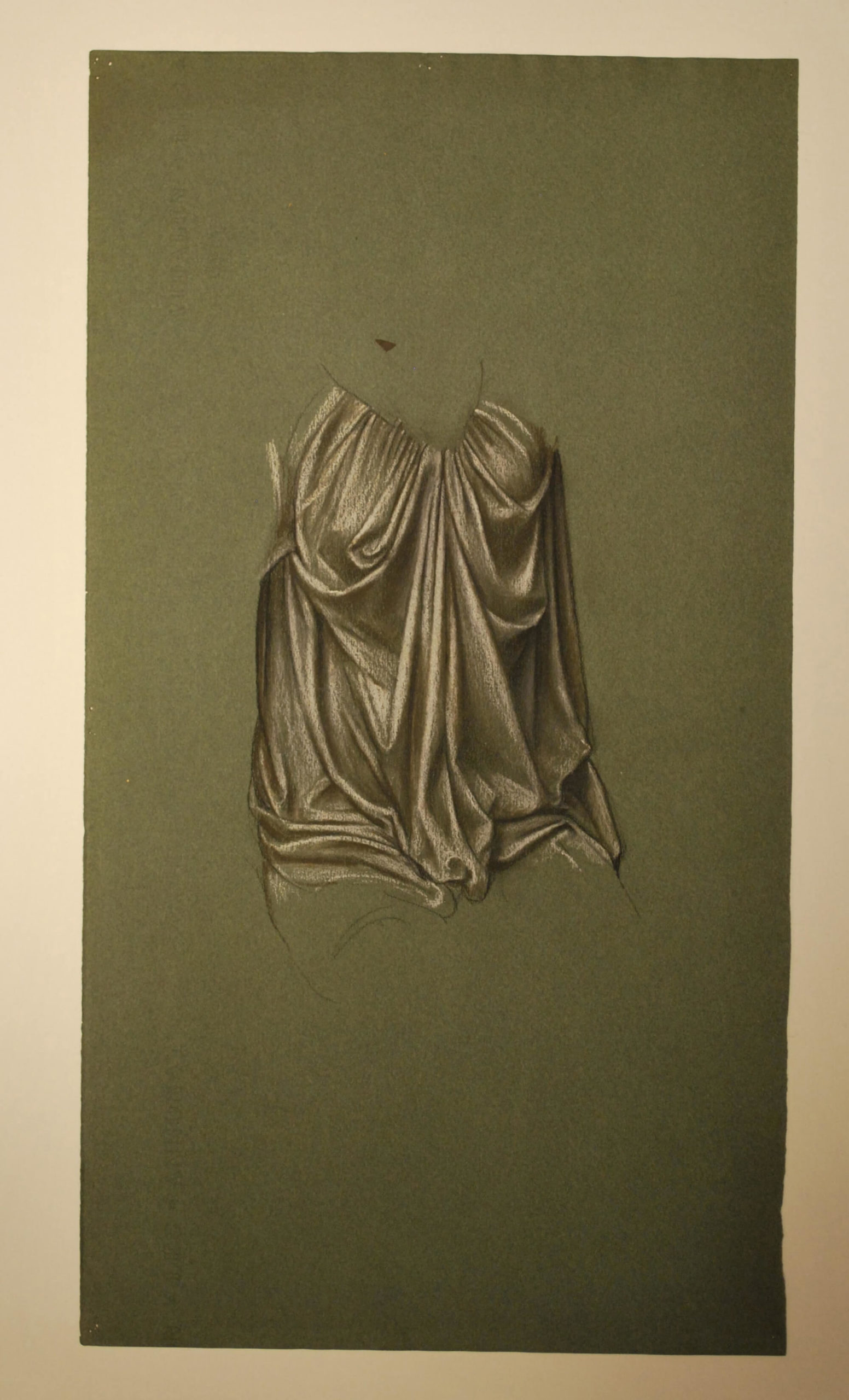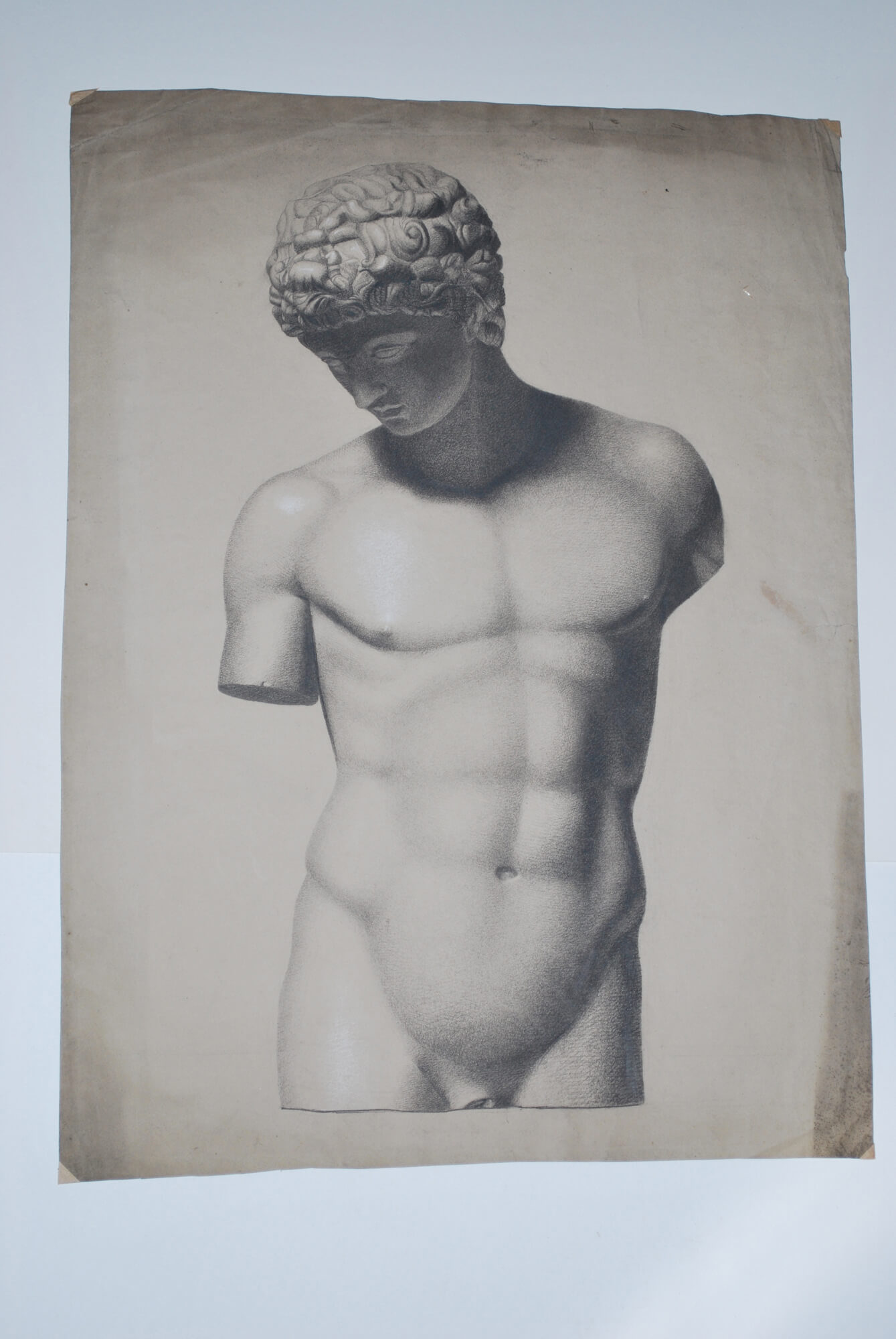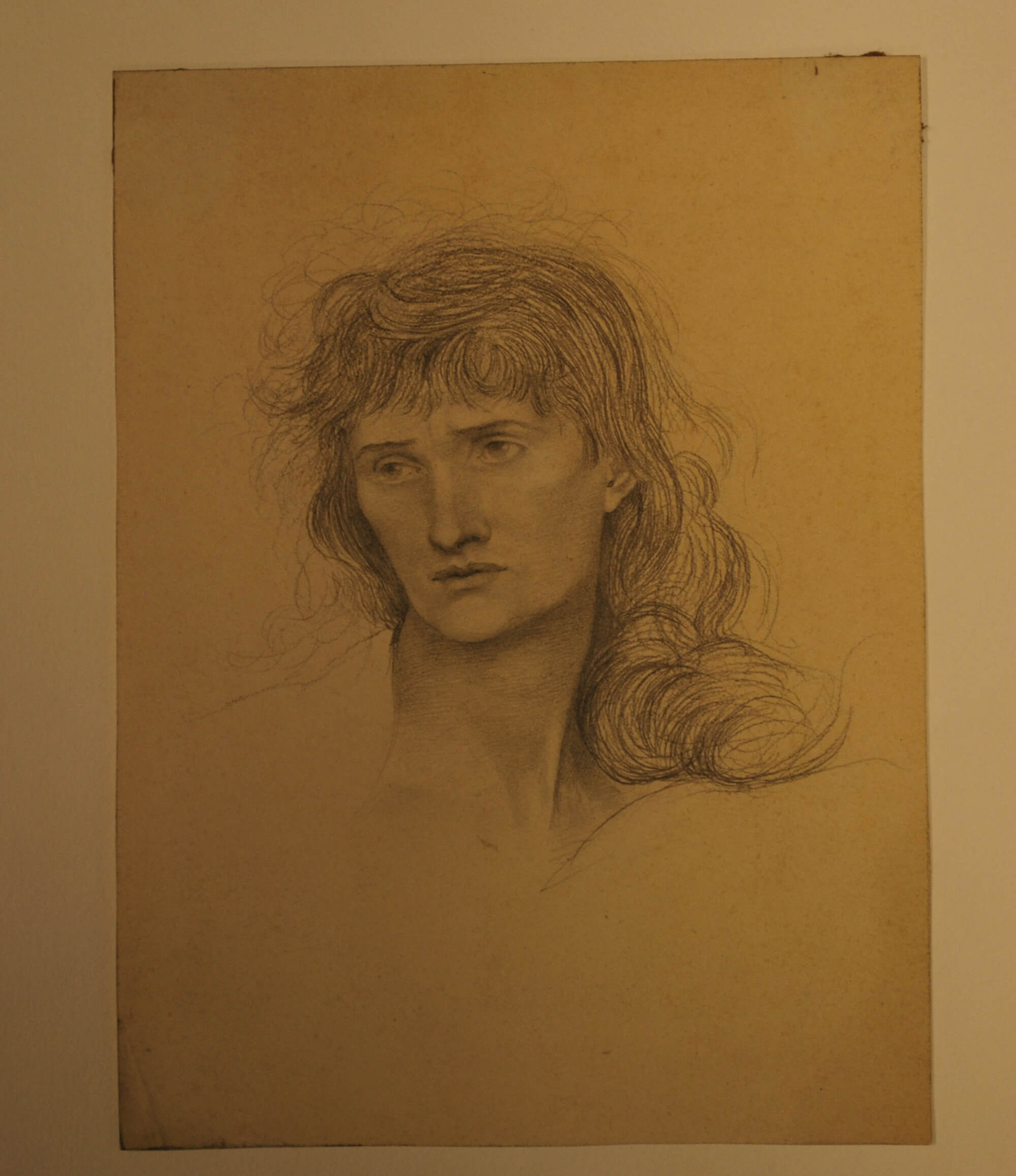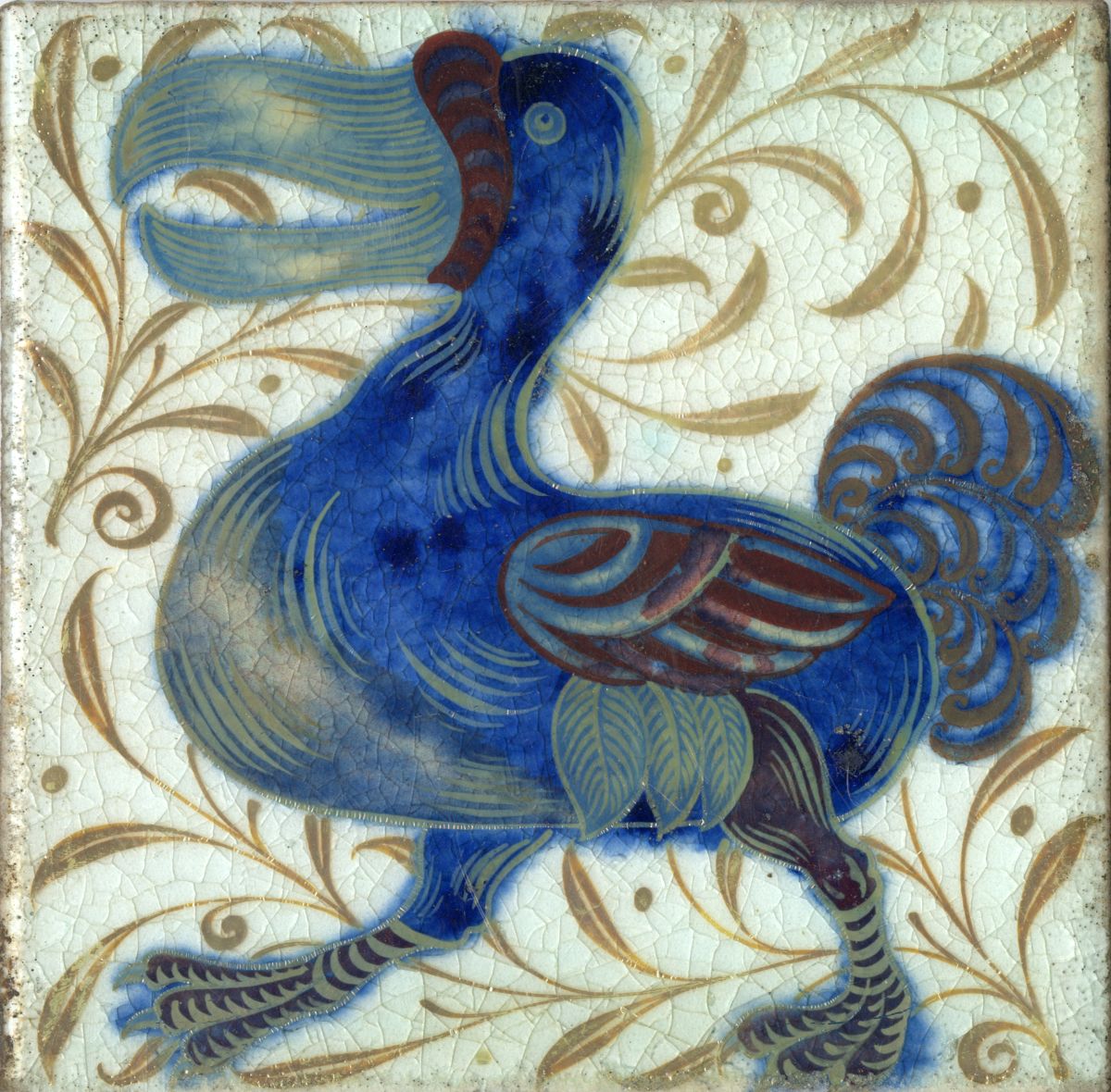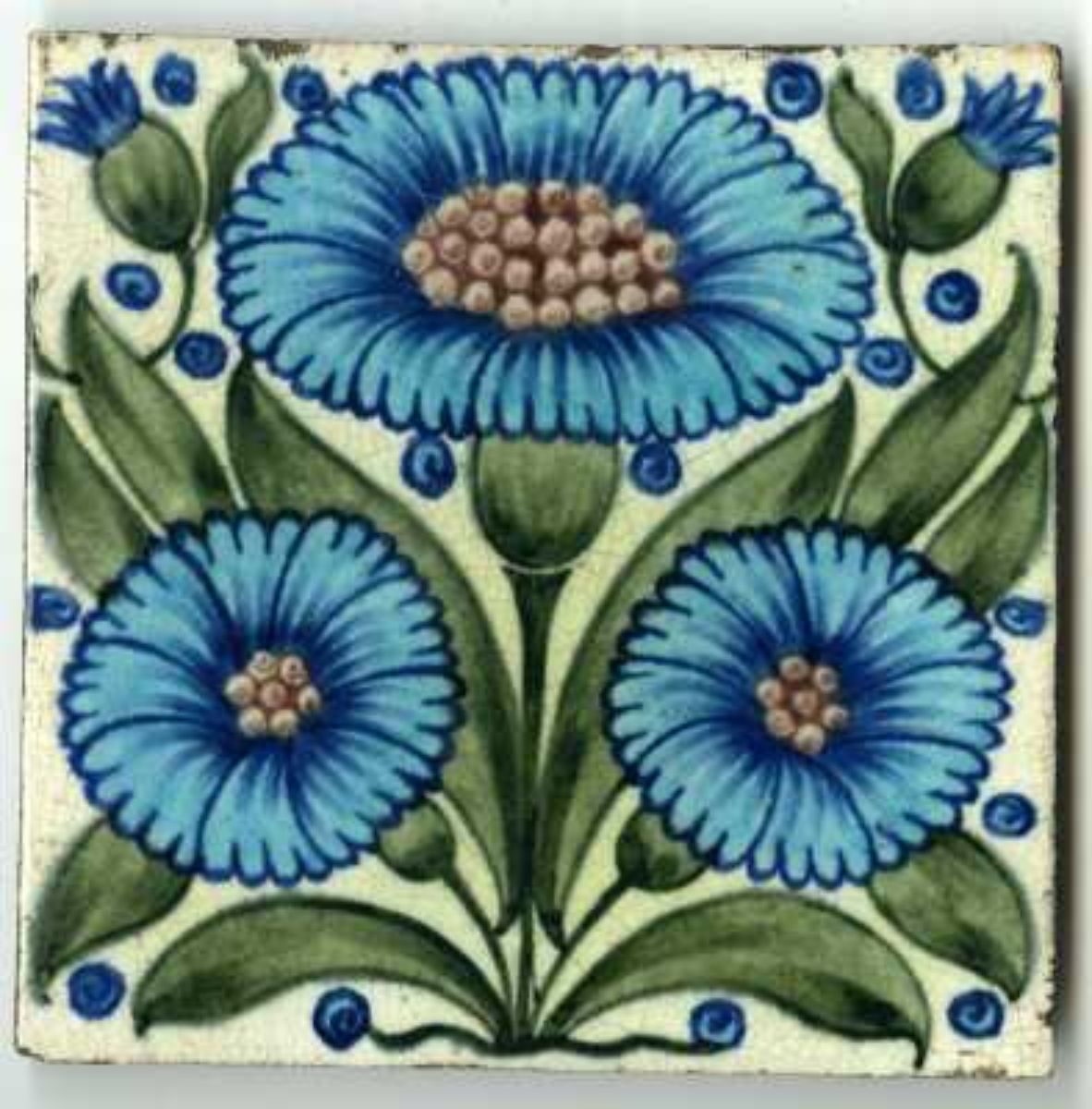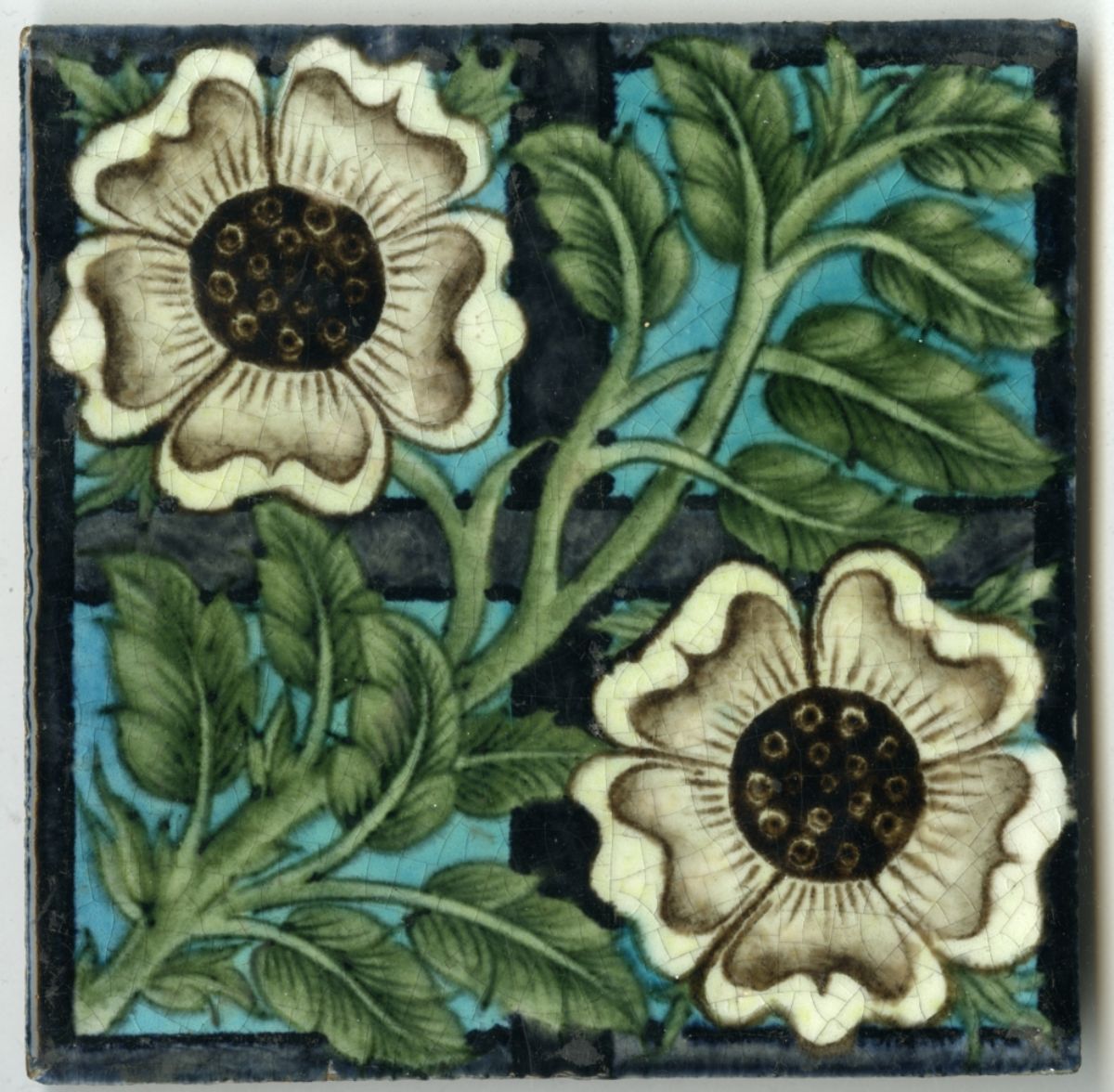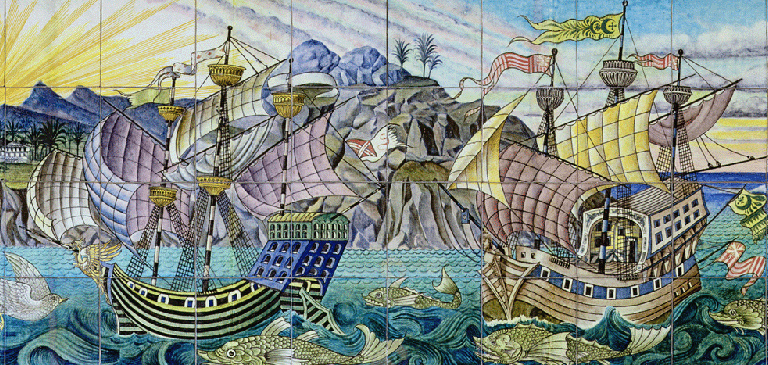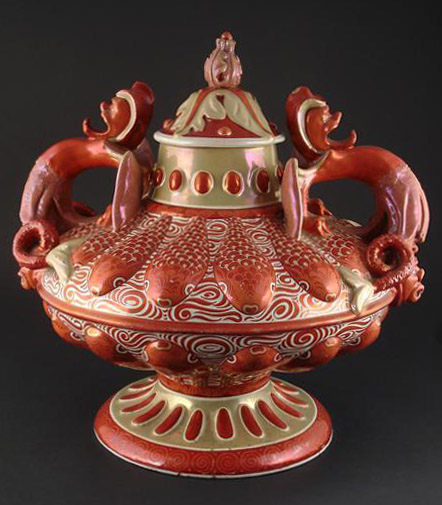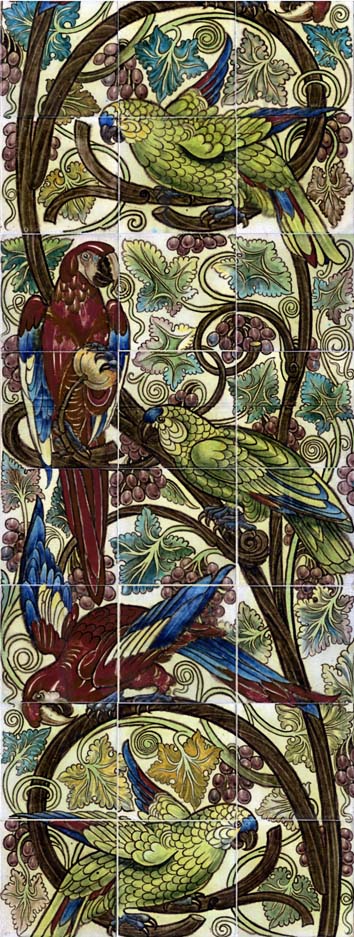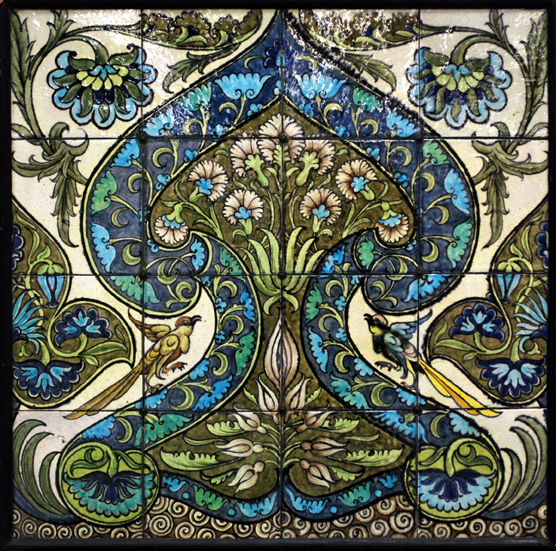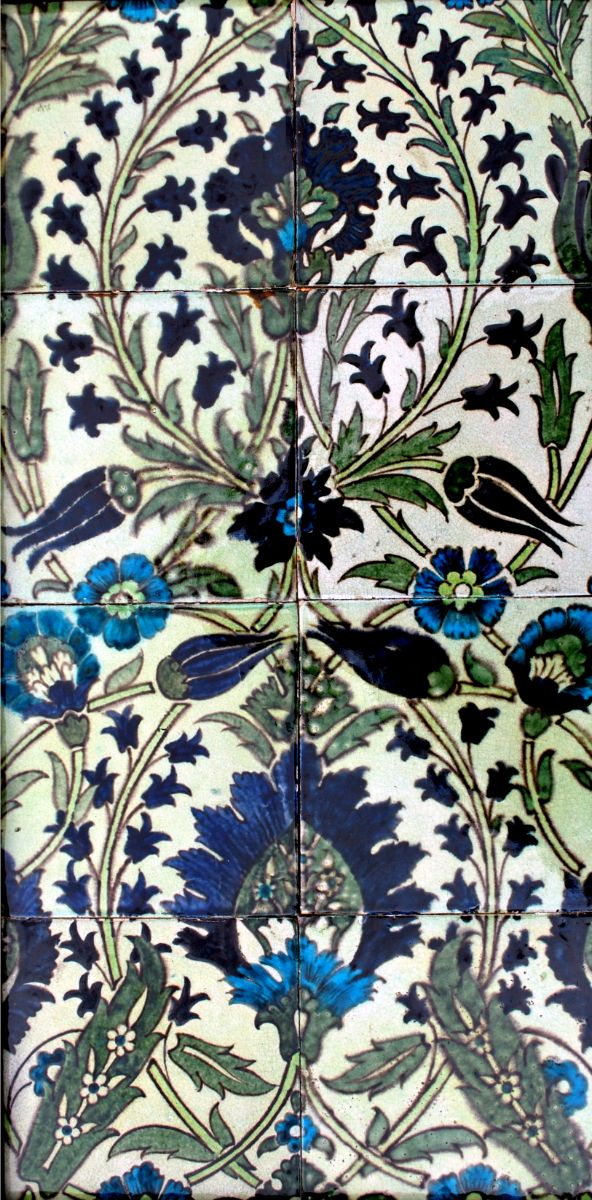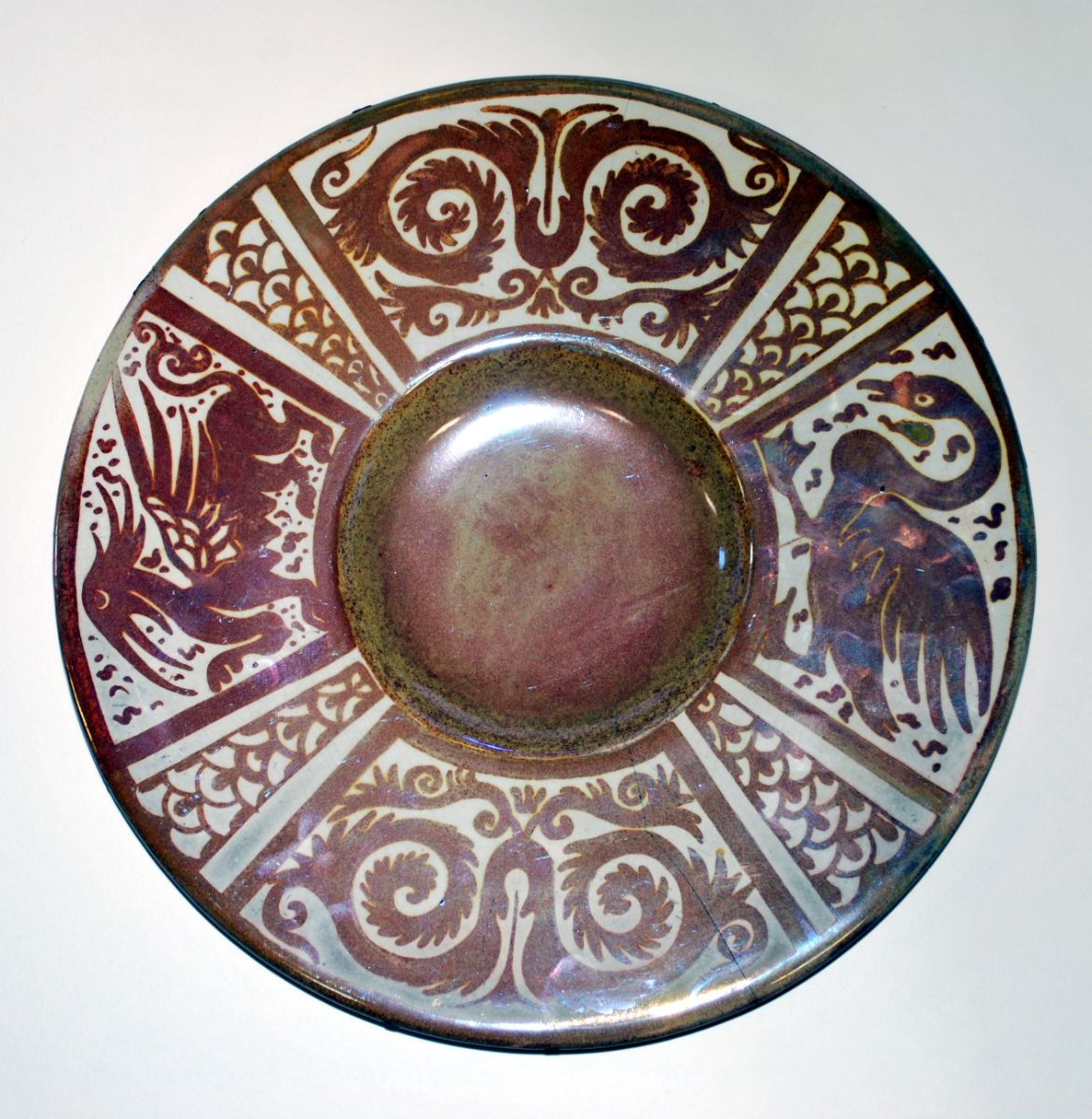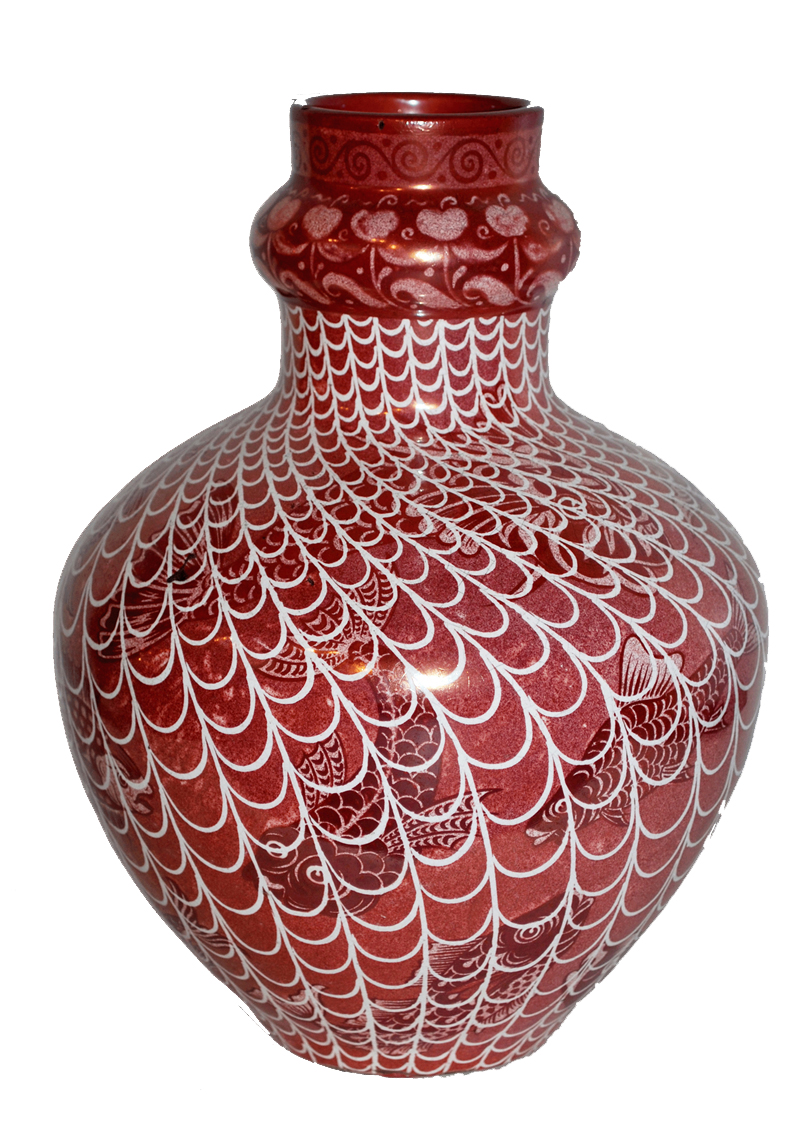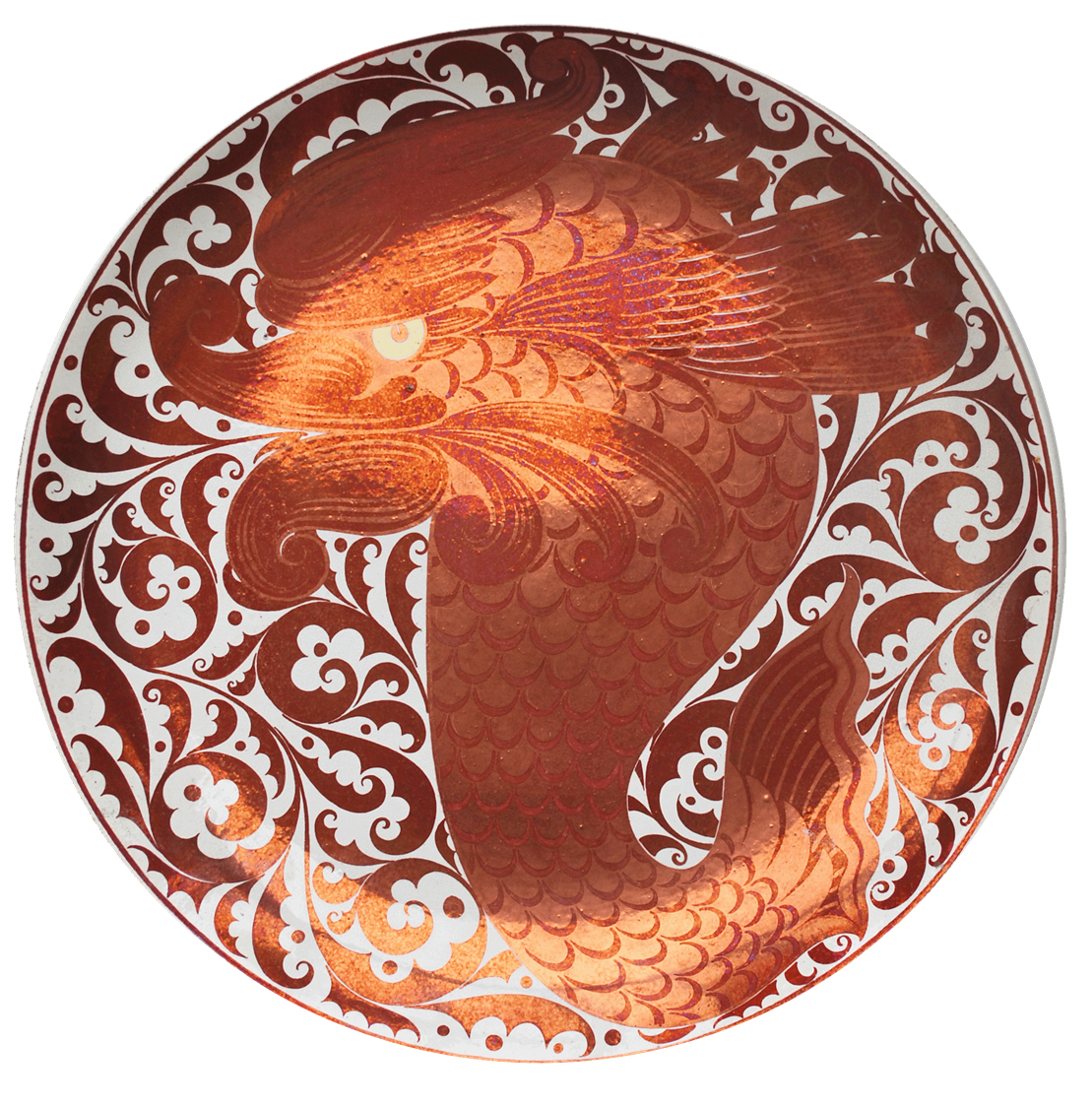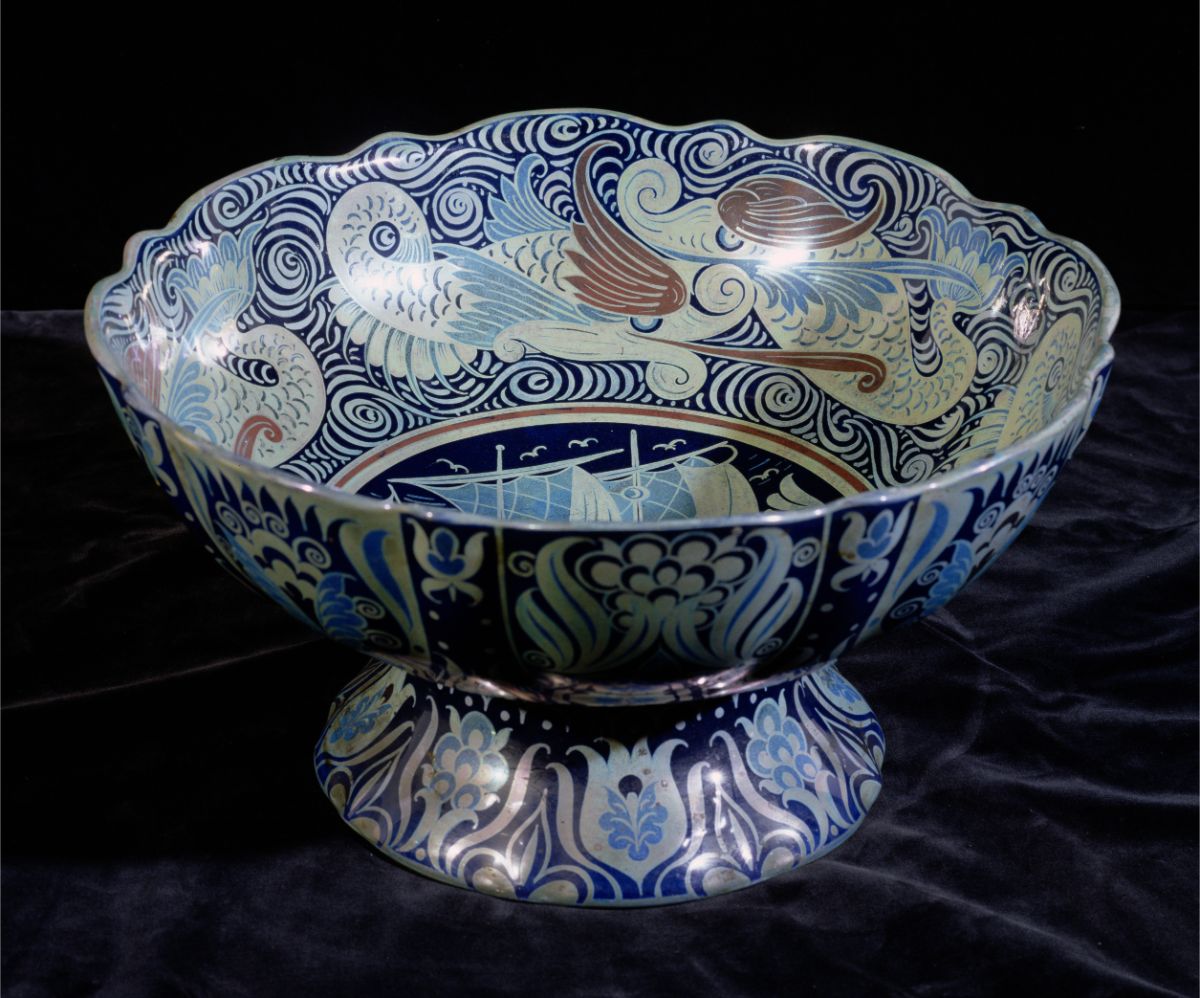Collection Highlights
The De Morgan Collection is the most spectacular of its kind. Established by Wilhelmina Stirling who was an ardent collector of antiques, furniture and particularly of Victorian and Edwardian painting and decorative arts.
With 56 oil paintings and 600 drawings by radical femist artist Evelyn De Morgan, and designs, paintings and over 800 pieces of ceramic by her husband, William De Morgan, the collection is the single largest in the world representing a single artistic couple, making it the leading authority on the work of the De Morgans.
This is a selection of the best objects in the collection. Each has been chosen for its uniqueness, the demonstrable mastery of the craft by the artist or sheer scale and beauty of the work.
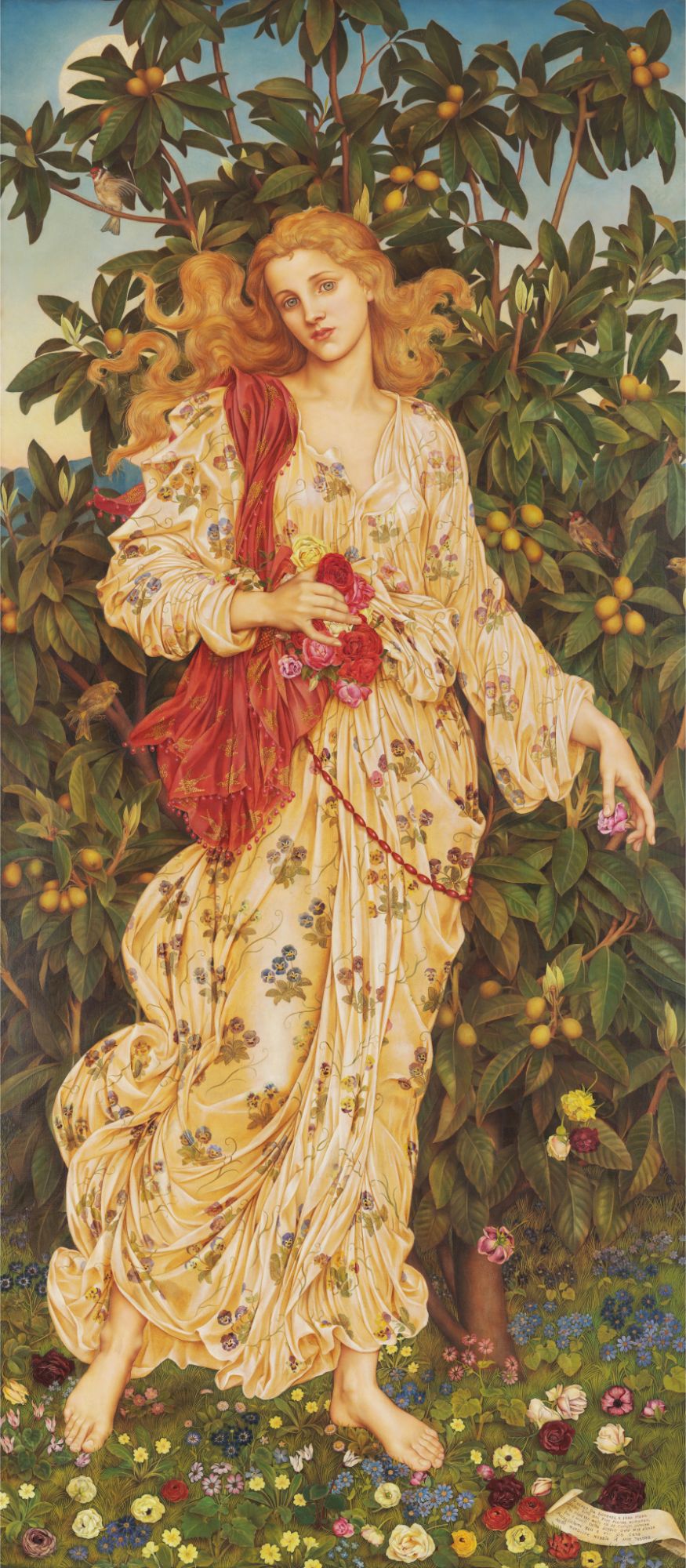
Painting Highlights
The Storm Spirits
In this painting the element of rain, thunder and lightning are personified as strong, beautiful female spirits, causing chaos and turbulence In the sea below them. To the left, dressed in yellow, is the spirit of Rain pouring grey water from a never-ending vial. To the right, Lightning - a red-win...
Flora
Flora is the Roman Goddess of flowers, especially associated with spring, her festivals, the Floralia, were from 28 April to 3 May. The scroll is in Italian and translates as follows: I come down from Florence and am Flora, This city takes its name from flower Among the flowers I was born and now...
Sleep and Death: The Children of Night
In this painting Evelyn portrays two young boys resting against the Lady of the Night, whose cloak flies behind her in the wind. The children are allegorical representations of Sleep who rests against the lady's knee and Death who stares out of the canvas holding an extinguished torch symbolic of th...
Night and Sleep
Night floats through the evening sky, his red robes reminiscent of the sunset, and his billowing cloak darkening the sky behind him. He floats arm in arm with Sleep, who gently scatters poppies onto the earth beneath, from the armful of flowers that he has taken from his girdle. (The Victorians used...
Resurrection of Christ
Cartoon for stained glass by William De Morgan
The Dryad
In Greek mythology dryads are mythological tree nymphs and protectors of the oak tree. Evelyn appears to have depicted a hamadryade, which is a type of nymph who is bonded to the tree itself. In this painting we can see the little nymph emerging from the tree, with her foot still hidden inside the t...
The Soul’s Prison House
When a study for this work was exhibited in 1889, a quotation attributed to St. Augustine of Hippo was attached to it illuminate, oh illuminated my blind soul that sitteth in darkness and the Shadow of Death. The Soul sits in its prison (the body) awaiting its release into the light beyond the p...
Drawings Highlights
Compositional study for Evelyn De Morgan’s oil painting ‘S.O.S.’, female figure
Evelyn created pastel compositional studies for all her paintings and these can be considered works of art in their own right. They show her technical virtuosity extended not just to oil paints but other mediums too.
Study of drapery on lower half of a standing female figure, related to painting ‘Flora’
Study by Evelyn De Morgan of drapery on lower half of a standing female figure, related to her oil painting 'Flora' (P_EDM_0017)
Study of a female bodice in draped gown, related to ‘The Hour Glass’
Study by Evelyn De Morgan of a female bodice in draped gown, related to her oil painting 'The Hour Glass' (P_EDM_0036)
Drawing from the antique male torso
Tonal study in charcoal and pastel on cream wove paper drawn by William prior to his studies commencing at the Royal Academy of Arts, London in 1859, whilst he was a pupil of Francis Stephen Cary, at his art school in Bloomsbury. Inscribed on the reverse "Drawn at Cary's"
Ceramics Highlights
Multi-Lustre Dodo Tile
6 inch earthenware tile decorated with a multi-lustre Dodo on an engobe ground. The dodo is an extinct flightless bird that was endemic to the island of Mauritius, in the Indian Ocean. The dodo was popularised in the Victorian period by Lewis Carol who featured the flightless bird in his work of fiction, Alice in Wonderland. This endearing animal is one of many charming designs produced by De Morgan which were perennially popular in the Victorian period. Typical application of these tiles would be in a nursery bathroom. De Morgan created multiple designs based on the same motif, by changing the background from plain, to decorative or by changing the colour. This particular tile is decorated with gold, copper and silver lustre highlights. These metals all have different melting temperature and have to be fired separately; accordingly this tile would have been fired 6 times and is very rare as it was challenging and expensive to produce. Whilst De Morgan often bought blank tiles from other tile manufactures to decorate, this particular one was made by De Morgan's own pottery. It is stamped on the reverse with the impress mark DM98 which dates the tile to De Morgan's pottery in Sands End in 1898. Sands End was an area of Fulham near Wandsworth Bridge.
Bedford Park Daisy
6 inch tile with three blue daisies, green leaves and blue dots. On an engobe ground.
Rose and Trellis Tile
This earthenware tile is decorated with two white roses in opposite corners which are entwined in green leaves. This bright white contrasts with the blue trellis and turquoise ground, creating an attractive design. Prior to opening his own pottery in 1872, De Morgan collaborated with William Morris and Edward Burne-Jones, creating ceramics and stained glass for the founders of the most iconic interior design firm of the Victorian period. Many of De Morgans ceramic designs, such as this Rose and Trellis Tile were inspired by Morriss design idiom and were intended to complement Morris interiors. The impress stamp on the reverse of the tile informs us that this tile was made in 1898 when De Morgan was in partnership with three of his former employees. DM98 impressed mark (n) reverse
Galleon Tile Panel
One of William De Morgan's most intricate and exciting tile panels, made for P&O ocean liners' opulent interiors. A colourful and exotic scene of sailing ships, birds and sea creatures has been imagined by De Morgan to transport passengers of luxury ocean liners to their holiday destinations.
Livadia Jar
A large William De Morgan jar and cover by Fred Passenger, moulded in relief with bands of stylised scaly fish, the two handles modelled as winged grotesques each with twin scrolled fish tails, in ruby and copper lustre, the cover modelled with foliage. These pots were made for the Tsar of Russia's newly constructed white limestone summer palace on the Black Sea (designed 1894, completed 1911) but were never delivered. Stylistically the so called Livadia Jar is unlike anything else made by De Morgan.
Scarlet Macaw and Blue Fronted Amazon Parrot tile panel
Framed tile panel consisting of a 8 x 3 section of polychrome tiles with scarlett macaws and blue fronted amazon parrots in a vine with grapes and leaves. Originally the tiles formed a large fire screen however it was damaged in the Bourlet's fire in 1991 and broken into 60 fragments. The panel was conserved and reassembled from broken tiles in 2012
Floral Ogee tile panel
Earthenware tile panel decorated with an Islamic inspired design consisting of an ogee shaped motif with flowers and birds. Consisting of 16 six inch tiles in a wooden frame.
Iznik Floral Tile Panel
Tile Panel made up of 8 tiles in olive, turquoise and dark blue inspired hy Damascus period Iznik tiles
Lustre dish decorated with swan and winged dragon
Wide rimmed dish in purplish-gold lustre. Centre of dish is undecorated. Rim is decorated with radiating panels featuring a swan, a winged dragon and
Fish and net Vase
Ruby Lustre inverted pear shaped vase with a short balustered neck. Decorated with fish swimming under a resist net pattern.
Dolphin Dish
Ruby lustre earthenware dish. Decorated with a fantastic dolphin facing left, against prickly leaves. Reverse with concentric rings of cream, red lust
Moonlight Lustre Galleon Punchbowl
Blue earthenware punchbowl with silver, gold and copper lustre decoration. Decorated with a galleon sailing on a sea at night, surrounded by dolphins


